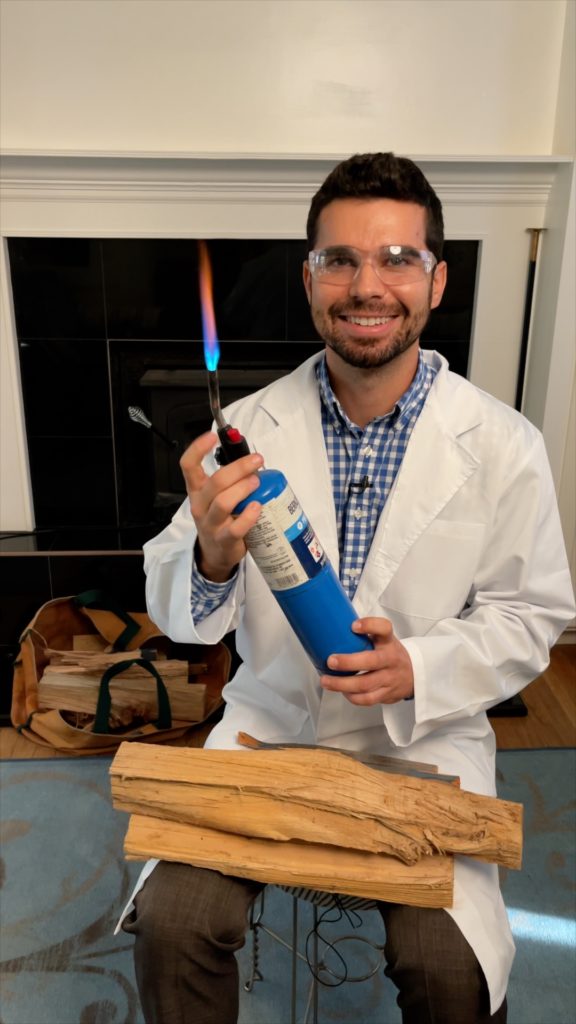The Chimney Safety Institute of America recommends chimneys, fireplaces, and vents are cleaned and inspected on an annual basis. But before you make an appointment with an inspector or chimney cleaner, here are some tips for diagnosing warning signs and educating yourself on best practices for peak chimney usage season:
- If it’s the first time you’re igniting your fireplace this season, create a heat source to reverse the flow of air in your chimney. Use a handheld blowtorch toward the damper area for 20-30 seconds. You can also use a firestarter for this. You’ll physically be able to feel the airflow change its course if done correctly.
- Check exterior flue and chimney for nesting or animals. It’s quite common for birds, bats and other animals to build nests during the summer months. If spotted, call animal control immediately.
- Wood that’s been split, stacked and covered for 12-18 months is more eco-friendly and can reduce emissions from your home. There are consequences to using wet, creosote-heavy wood that creates dense, dark gray smoke that can fill your chimney with flammable tar. Today, there are more options for homeowners hoping to reduce smoke and the odor that can come with soot. More information can be found here.
- Consider the temperature outside. If mild temperatures persist (40s and above), it’s harder for smoke to flow up your chimney rather than come back out into the room. A strong temperature difference of 30 degrees from indoors to outdoors increases the flow of smoke and reduces backdraft into your home.
It is advised that homeowners work with professionals if there are areas of deterioration, water spots, or excessive creosote build-up in your chimney or flue. Severe weather events — like Hurricane Ida in September — are capable of causing roof and chimney damage that are often undetectable. Preventative maintenance is always the key to a healthy fireplace.

Article provided by Joe Ochal, a Conshohocken resident and the founder of Chimney Scientists.

